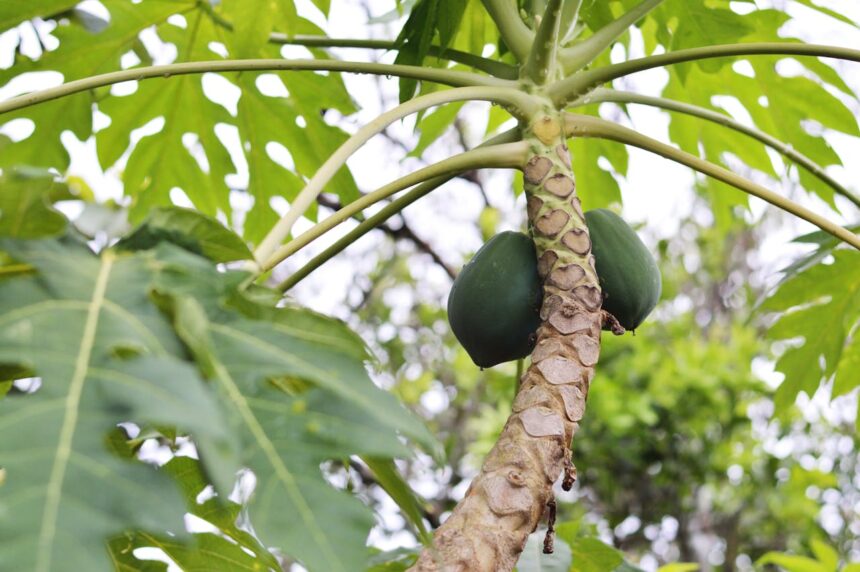Sustainability isn’t just a buzzword; it’s the future of business. In today’s world, consumers and companies alike are seeking eco-friendly alternatives in every industry. One area ripe for innovation is sunscreen production, specifically using natural ingredients like papaya. This blog post will guide you through the essential steps to develop a robust business plan for papaya-based sunscreen, tailored especially for sustainable business owners.
Understanding the Importance of Sustainability in Business
The demand for sustainable products is skyrocketing. Consumers increasingly prefer brands that prioritize environmental responsibility. A recent Nielsen survey revealed that 73% of global consumers would change their consumption habits to reduce their environmental impact. Businesses that adopt sustainable practices not only attract eco-conscious consumers but also build long-term resilience. Sustainability can lead to cost savings, improved brand reputation, and compliance with regulations.
The Papaya Fruit and Its Beauty Potential
Papaya is more than just a delicious tropical fruit. It’s packed with nutrients and enzymes like papain, which offer numerous benefits for skin health. These properties make papaya an ideal ingredient for beauty and wellness products. Antioxidants in papaya help protect the skin from damage caused by free radicals. The fruit’s natural enzymes gently exfoliate the skin, promoting a brighter complexion. Papaya-based products are typically rich in vitamins A, C, and E, which are essential for maintaining healthy skin.
Why Papaya-Based Sunscreen is a Sustainable Choice
Papaya-based sunscreen aligns perfectly with sustainable business practices. Traditional sunscreens often contain chemicals that harm marine life and disrupt ecosystems. In contrast, papaya-based formulas utilize natural, biodegradable ingredients. Sourcing papaya sustainably supports local farmers and reduces the carbon footprint associated with long-distance transportation. Using renewable resources in production and committing to eco-friendly packaging further emphasizes the product’s environmental benefits.
Developing a Business Plan for Papaya-Based Sunscreen
Creating a comprehensive business plan is crucial for the success of your papaya-based sunscreen venture. Here’s a step-by-step guide to help you get started.
Market Research
Begin by understanding the market landscape. Identify your target audience, competitors, and market trends. Surveys and focus groups can provide valuable insights into consumer preferences. Analyze data on sunscreen usage, preferences for natural ingredients, and purchasing behaviors. Understanding the competitive landscape will help you identify gaps in the market that your product can fill.
Product Development
Next, focus on developing your papaya-based sunscreen. Collaborate with skincare experts and chemists to formulate an effective product. Ensure that the sunscreen meets all regulatory requirements for safety and efficacy. Conduct thorough testing to confirm the product’s SPF rating and its benefits for different skin types. Consider additional features such as water resistance and hypoallergenic properties.
Financial Planning
A solid financial plan is essential for securing funding and managing resources efficiently. Outline your startup costs, including research and development, production, marketing, and distribution. Create detailed financial projections to forecast revenue, expenses, and profitability. Consider various funding options such as grants, loans, and investor partnerships to support your business.
Learning from Successful Sustainable Businesses
Examining case studies of successful sustainable companies can provide practical insights and inspiration. Take, for example, Burt’s Bees, which started as a small candle-making business and grew into a global leader in natural personal care products. Their commitment to sustainability, transparency, and ethical sourcing has been key to their success. Another example is Lush, known for its fresh, handmade cosmetics and dedication to reducing packaging waste. Studying such businesses can offer valuable lessons on scaling sustainably and building a loyal customer base.
Effective Marketing and Commercialization Strategies
Marketing your papaya-based sunscreen effectively will be critical to its success. Focus on eco-friendly packaging that highlights the product’s natural ingredients and sustainability. Use recyclable or biodegradable materials to minimize environmental impact. Craft messaging that resonates with eco-conscious consumers, emphasizing the product’s benefits for both skin health and the environment. Leverage social media and influencer partnerships to reach a broader audience and build brand awareness. Offer incentives such as discounts or loyalty programs to encourage repeat purchases.
Conclusion
Launching a sustainable business like papaya-based sunscreen is not only a profitable venture but also a meaningful one. By following these steps, you can develop a solid business plan that aligns with sustainable practices. Don’t wait—take the first step today and turn your vision into reality. Partner with experts, conduct thorough research, and focus on delivering a product that consumers will love and trust. Your commitment to sustainability will not only benefit your business but also contribute to a healthier planet. Join the movement of sustainable entrepreneurs and make a positive impact on the world.





